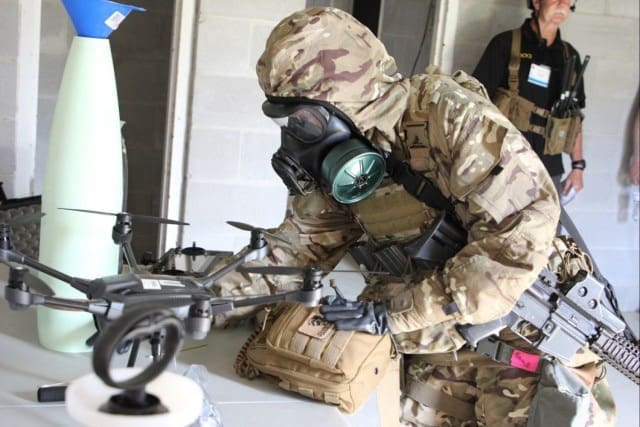ABERDEEN PROVING GROUND, Md. — Every year since 2018, the U.S. Army Combat Capabilities Development Command Chemical Biological Center — DEVCOM CBC — has helped the Defense Threat Reduction Agency plan and execute an in-the-field user assessment of chemical, biological, radiological and nuclear technology called Chemical and Biological Operational Analysis. This year, CBOA was held at Camp LeJeune, North Carolina from April 13 to 18, and DEVCOM CBC was in the thick of it.
CBOA is funded under the Chem-Bio Defense Program and executed by the Joint Science and Technology Office of the Defense Threat Reduction Agency, or DTRA. It brings technology developers from government agencies, industry and academia together with warfighters in order to put new technologies into warfighters’ hands. Warfighter feedback provides vital input to technology developers, enabling them to make improvements and correct shortfalls.
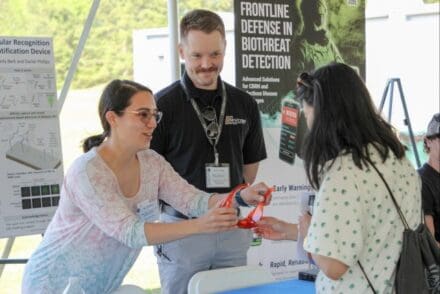
At Camp LeJeune, warfighters put these protypes through their paces in realistic field scenarios in which warfighters used them to interrogate mock unknown CBRN weapons caches. After running through each scenario, the warfighters gave the technology developers very specific feedback on what worked, what did not and how they could be improved.
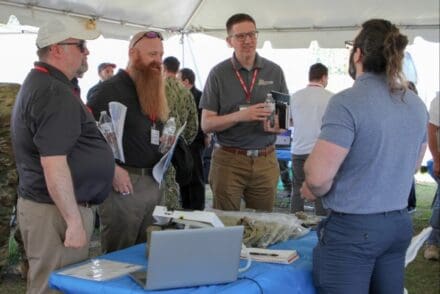
That feedback is often simple but important, such as, “The labeling of the buttons on the chemical agent detection device is confusing.” It can also lead to new innovations, such as, “Can I mount the device on my helmet so that my hands are free?” Feedback can also include how warfighters are taught to use the new equipment, such as “Most of the people in my unit are visual learners, can you make a video version of the user’s manual?”
Clare Hamilton, a DEVCOM CBC program analyst, has supported CBOA since its inception. This year, she managed the Concept Tent during the CBOA event where technologies under development but not mature enough to use in the scenarios were displayed. Starting last October, she helped evaluate all the candidate technologies submitted by the technology developers and coordinated their participation in the Concept Tent. Of the 19 technologies displayed on tabletops in the tent this year, five were developed by DEVCOM CBC.
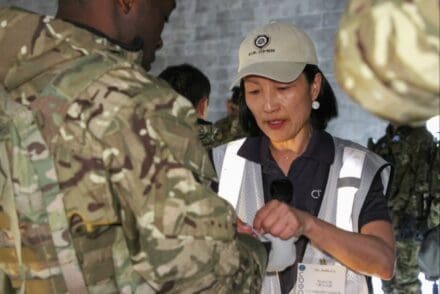
Some of the tasks DEVCOM CBC personnel took on were highly technical. David Glynn, a DEVCOM CBC liaison officer to the U.S. Army Maneuver Support Center of Excellence at Fort Leonard Wood, Missouri, assisted as a “lane walker” at one of the scenario locations. It is a role that requires a keen knowledge of both CBRN technology and the way the scenario was designed.
“It was my responsibility to ensure that the warfighters participating in the scenario were trained in the proper use of the assigned new technology. I also ensure all users were at the right location at the right time in order to start the missions,” said Glynn. “While conducting missions, I made sure that every technology was used in the manner it was designed to be used. I also ensured the right simulants were in place in order to properly trigger a response form the technology.”
DTRA organizers have used lessons learned over time to steadily improve CBOA’s value to both technology developers and warfighters. This year’s event included two full days of warfighter training on the prototype technologies before the actual scenario run-throughs.
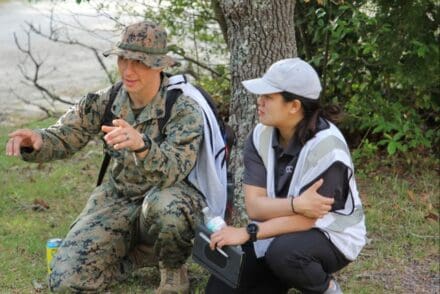
There were six scenarios in all, spanning chemical, biological, and pharmaceutical-based agents, as well as radiological threats. The scenario participants, 110 in all, included U.S. Special Forces, Marines, Soldiers, Airmen, Coast Guard, and Custom and Border Patrol members. At the end of each scenario, warfighters shared their evaluations of the new CBRN technologies in both face-to-face discussions and by filling out detailed questionnaires. As the DTRA project manager for the event, Markham Smith, put it, “We want technology developers to make their improvements while the clay is still wet.”
DEVCOM CBC Director Michael Bailey attended the event and was pleased with what he saw. “At CBOA we get to see early science and technology that will pay off in time. Many technologies we and others have brought over the years have been licensed to industry for production and are now fielded,” he said. “CBOA is able to do this because of the wide range of organizations it brings together, agencies like the Department of Homeland Security, defense research laboratories, the services and many different technology developers from industry. That makes CBOA a big contributor to the nation’s CBRN defense. I appreciate that DTRA uses our help for this extraordinary event every year.”
By Brian Feeney
Read the full article here

